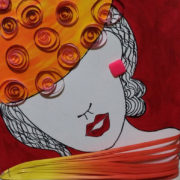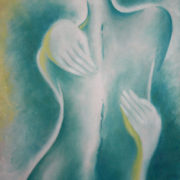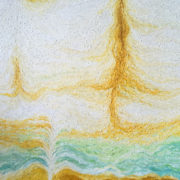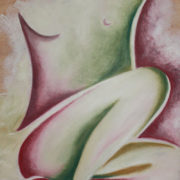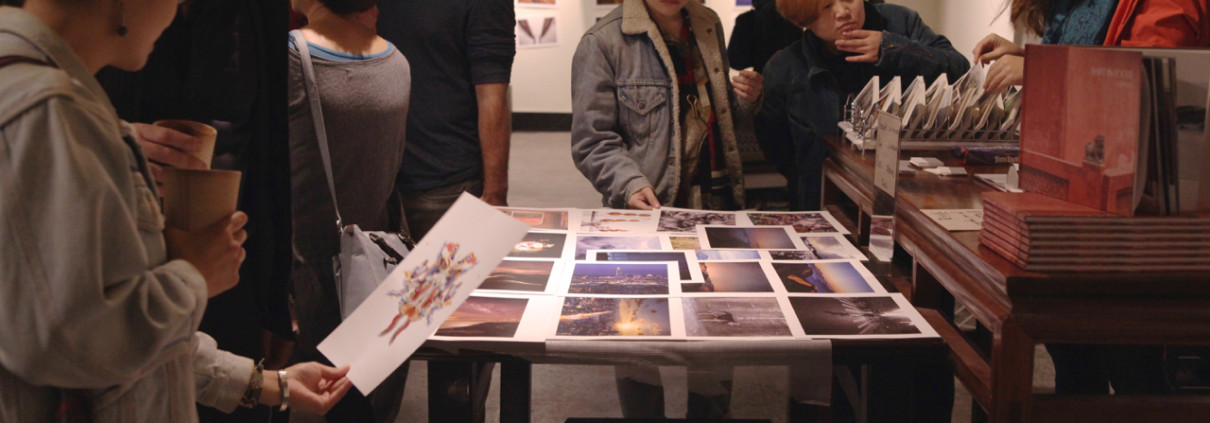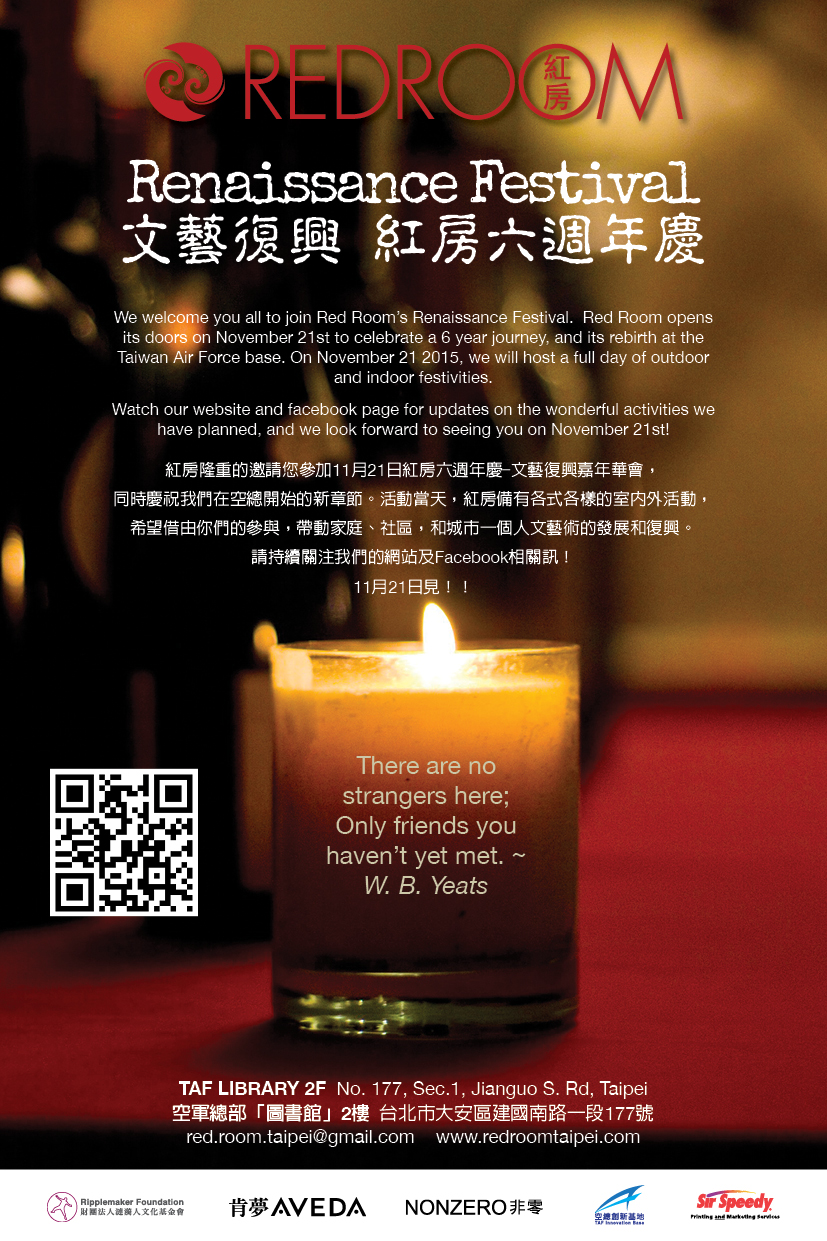Pragya Borar
- She: Her own self-expression
- My Happy Place
- Out and Loud
- Soul Talk
- Self-Lover
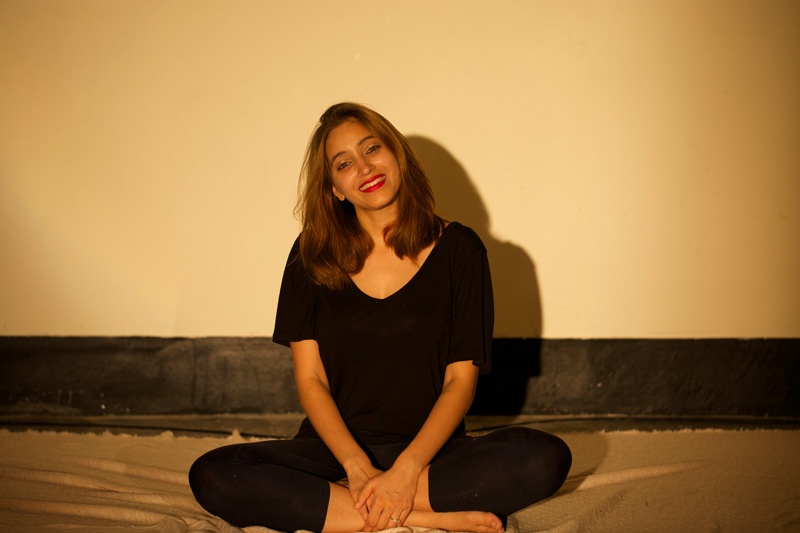
ARTIST BIO
Pragya is a self-taught mixed media artist. She started playing with colors at the age of 5. Art is symphony of her life and her self expression. Through her art she likes to discover her boundless inner creativity and passion, as she constantly strives to communicate her inner self through it.
Pragya’s current work of art on watercolor paper and canvas is about women and nature. It focuses on the journey of being a woman and how everything about nature inspires her to keep doing what she loves.
She believes women need to be themselves in all the phases of life irrespective of what they are asked to be. They should embrace their imperfection because it makes them who they are.
Through her art, Pragya has tried to push herself to explore new boundaries. She hopes to inspire people to pursue their passion. Magic happens when you don’t give up even though you want to. The universe always falls in love with a stubborn heart.
Kristine Huang
- Layers of hurt, hate, love, lost…!
- Steps to be freedom!你腳下踩過的⽚段重要的提醒這我, !⾃由的美好!
- embrace no.2!有時候, 擁抱⾃⼰花的⼒氣需要很⼤很⼤!
- please feel me in 8 different ways!
- Me, myself and I!
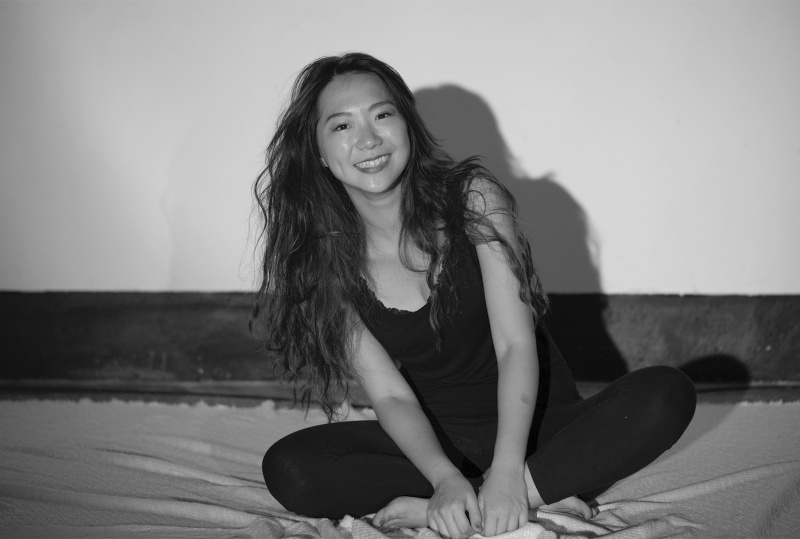
ARTIST BIO
“透過繪畫,我把自己一一拼整回來,表達一則則烙印在心裡的故事。”Ting Wei Huang 就讀美國洛杉磯時尚設計學院主修時尚設計,並在2015年赴義大利佛羅倫斯Polimoda 服裝設計與行銷管理學院進修。Ting Wei的繪畫就像一篇篇的日記,藉由顏色的變化與柔軟的線條來敍說故事
Ting Wei Huang studied at FIDM in Los Angeles, USA, and majored in Fashion Design. In 2015, Ting Wei moved abroad and attended Polimoda Fashion Institute in Florence, Italy, and majored in fashion design. Ting Wei’s paintings are portrayed through the style of journal entries. She tells stories through changing color shades and elegant lines.
ARTIST STATEMENT
Ting Wei Huang作品傾向於傳達自我探討的意義與意象。擅長放大細微的感覺,抽象具體繁雜的內容,擁抱這份觸動,在創作裡享受著,跳舞與歌唱… 從小就愛繪畫的她, 藉由繪畫藝術傳達如何面對自己、了解自己,進而接受自己的過程。透過反覆動作的描繪手筆,不斷產生矛盾與掙扎,勾勒出她內心深處那些想被看見的輪廓。Ting Wei希望她的藝術作品可帶給人們一份喘息和沈澱的空間,靜下來去感受與擁抱生命中的美好。
Ting Wei Huang’s works are based on introspection. From abstract concepts to concrete stories, the content of her paintings consistently brings forth a variety of intricate details. While indulging in dancing and singing, the pure enjoyment lies within each creating process. Ting Wei found her love and passion in painting since a young age. The art of painting and creating provides a leeway for Ting Wei to dive into self-acceptance, self-understanding, and eventually, self-affirmation. Through her paintings she has tried to reflect her different feelings from happiness to struggle, she hopes that her work of art can make people embrace the real beauty of life.
Conversations with Artists: Alex Houghton
You said you were a third culture kid, growing up in Taiwan, Hong Kong and Australia. Why did you grow up in so many different countries? How would you say that shaped you?
My father is an Engineer and a specialist in trains. Hong Kong MTR to Taiwan High Speed Rail were some of his projects, so we travelled with the job. It became the normal, new school, new friends, new languages every few years. Everywhere we went there was a time for exploring and learning the culture, and then there was a time to make it home. It really opened my eyes to cultural perspectives, traditions and every day life. I feel like the Koi becoming the Dragon, it was a journey that each place left an influence on me.
So your website says you developed a love of photography when you needed resources to design with. Would you say it evolved from there?
I originally picked up my camera in high school and played with film. I always enjoyed the hands on aspect of it and the meticulous process of developing to printing. When I was eighteen had a lot of time to play with a Sony Cyber Shot 3.2 mega pixel camera and I loved it. I would take my photos and make patterns, brushes and play with blending images. Without realizing it, photoshop became my muse. I went to Kenya and a Doctor gave me his DSLR and say try this. I went nuts and my eyes opened up and realized this was the next level. It was ,and still is, an ongoing process of creating, playing, blending and simplifying. I have chosen to pursue photography and graphic design as my career for 8 years now and the neat thing is, that the photography has taken me far beyond what I expected. It is like a key that has opened many doors and opportunities I never expected.
I’ve noticed you’re original fascination with blending images and transforming them is highlighted in your mini-series, Reflected. Would you care to talk a little bit about the inspiration behind the series?
I love temples and I always felt I couldn’t appreciate the detail of the roofs. I started playing with my zoom lens and trying to capture the detail. I would try find stairs, passage ways, what ever I could do to get higher. I went home and started playing and it struck me that if I reflected my creations on themselves the details were more clear to the viewer. I started playing with the patterns, the colors, the symmetry. Next thing I know it is one of my favorite things to do.
How did the artistic process differ there? Does what you’ve done in the mini-series reflect a satisfaction in a different process or is it simply an extension of what you find interesting about photography?
For me the Reflected Series went back to my Graphic Design Roots. My photography has gone thru phases of heavy editing to simple editing. Reflected allowed me to push the boundary that people became fascinated rather than old conversation of too much or too little photoshop. It’s a different state of mind when I go out to capture stuff for reflected, I search for something that stands out, analyze it, imagine it and then photograph it and edit it.
How has your love of photography changed?
My love of photography is apart of who I am. Every day I am playing with photos, taking photos, researching locations, reading about techniques and having fun with it. It hasn’t changed, it has become more intense and in every aspect of my daily life.
Some people say that art changes the way we see things. How did photography begin changing how you see things?
Playing with perspective, lying on my back in temples, leaning over boats to get the most reflection from the water surface– I love textures, everyday life and the details of makes your local neighbourhood feel so home like. My hope would be that people look at my photos and then go back to there home and see opportunities all round them to photograph. I can’t say it has changed what I see cause a lot of my work was just the way I see it naturally.
Why did you choose to feature Taiwan in your first book?
Taiwan is the longest place I have lived combination of 13 years. This is where I learnt everything, made some of the best friendships, kicked off my working career, fell in love, studied and become who I am today. I wanted to celebrate this beautiful country and show people the diversity of what Taiwan has to offer. I want people not to think of a concrete jungle but rather a wild, intriguing, cultural rich island of treasures. Taiwan to me is the Venice of Asia, I try to explore as much as possible and I feel I am still scratching the surface of possibilities.
I noticed you had different categories: People, animals, mountains, water etc. All in pinyin. How did those categories come about? Why did you choose to write everything in pinyin?
I got organised and laid out all my photos and I saw themes pop out at me, either by colour scheme, lines, and textures and grouped them. By doing that it made the images stronger as a collection to compare and emphasize.
Like my website name is a play on English and Chinese, I wanted my albums to be a play on words.
What do you enjoy shooting most?
Taiwan temples. The detail, history, colours, craftsmanship, the community and peoples all coming for their own reasons. When I enter a temple I imagine how every piece was hand made and put together. The significance of symbols and meanings, the richness of preserving the temple culture and the dedication from the people who maintain it.
What was/is the most challenging part of photography? What advice would you give someone interested in photography?
The challenging part is keeping organised and not ending up with hundreds of photos never edited and sorted. I have tried to slow myself down as we can all go trigger happy especially with digital. The world wants to see photos. so the challenge is getting them off your computer as a nice background in the hands of people to see your work.
Photography is you stopping to capture a moment in time that stood out to you. There are always photos we wish we took, photos that make us want to know how they did that. No matter what celebrate in your own creativity, don’t analyse but rather appreciate. Whatever cameras you have take it out with you. Document what you like, create a memory and have a photo to reflect on it. Art is about expressing yourself so don’t get discouraged; show the world your point of view!
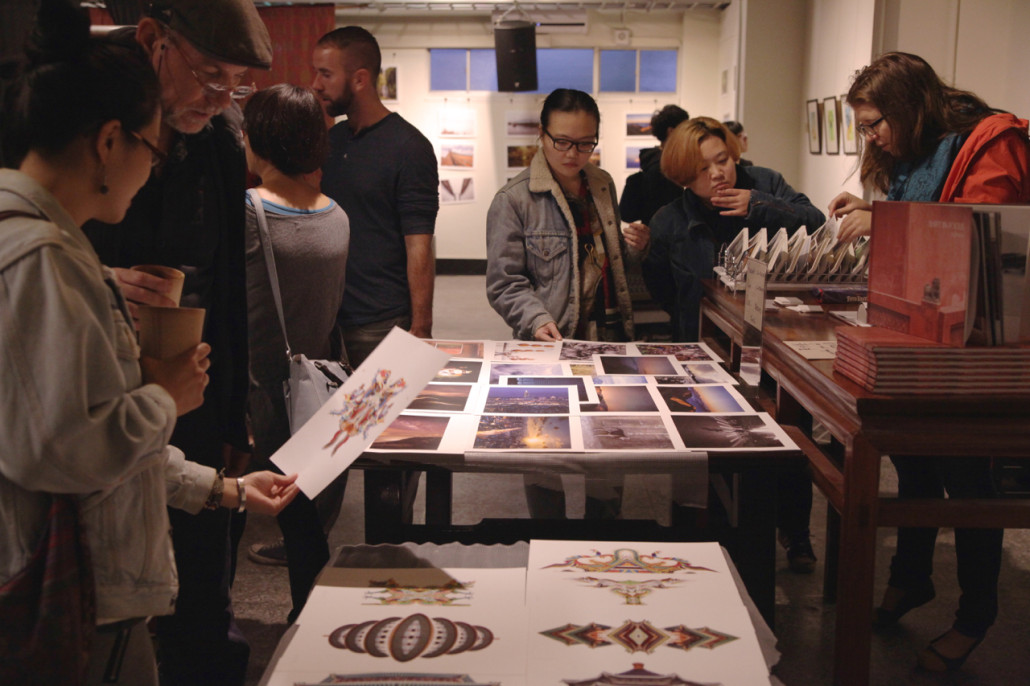
Red Roomers browse through Houghton’s prints and peruse his book at the opening of Red Room’s third Visual Dialogues
When did you first get involved with the Red Room? Why did you choose the Red Room to exhibit your work?
I first came to Red Room 6 years ago when they first opened. I came down with my camera and photographed the layout. 6 years later, 2 of my photos have been used constantly.
Roma [Mehta] has always been a huge role of support for me. She has encouraged me to show the world my photography. She helped me get published in the Centered magazine my “Sausage Man” photo. That encouragement and friend network/support within the Red Room wanted me to do my exhibit with Red Room.
What is it about the Red Room you feel is special?
The Red Room is a space to be creative without borders; it is a place to explore ideas, collaborations, and network with such a chill vibe. Since returning to Taiwan, I just love what Red Room has become and the development over the last 6 years. This is something special that is very unique.
How would you like to see Red Room transform and grow?
I feel Red Room is such a creative hub as long as the people are behind it, we can take it anywhere. It is a place of no boundaries and constant exploration for creativity. I would love to see Red Room get an established long term base so they can set up and invest in it for the long term. I want to see Red Room keep its personal touch while becoming a part of the creative movement growing in Taiwan.
How would you like to see your photography grow? Do you have any goals for your future? Any places you’d like to capture?
I would love to see my photography in collaboration with tourism. It is a dream that my photos could represent someone’s first impression of where they are going. I am going to India for the first time in 2016 and that’s mind blowing for me and can’t wait. There are too many places I want to go to be honest. I lived in Taiwan for twelve years and I feel I haven’t scratched the surface still! I think rather than saying one place, I’ll go anywhere camera in hand. Sometimes the picture you find is a plane ride away or just round the corner.
By Leah List





